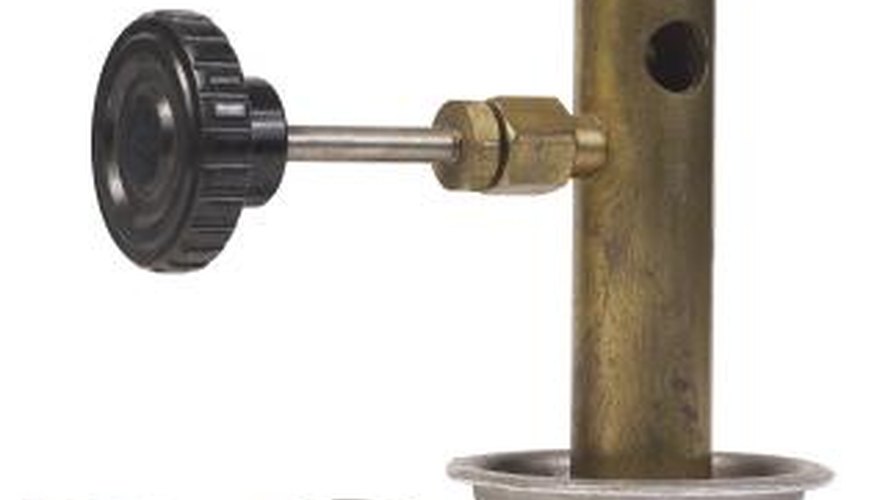Although both instruments efficiently provide heat in laboratories by burning gases, the Meker burner creates more powerful flames than the more familiar Bunsen burner. The Bunsen burner is typically used in middle and high school science classes to heat substances, while the Meker burner is usually found in professional labs.
Bunsen burner

Invented around 1860, the Bunsen burner is a long metal tube from which a flame emerges. It is attached to a metal base from which air and gas combust. The amount of air is controlled by a valve. The more air let in, the hotter the flame and the higher the flame. A smaller yellow flame emits less heat than a longer blue flame. The outer ring of the flame is the hottest part.
- Invented around 1860, the Bunsen burner is a long metal tube from which a flame emerges.
Meker burner
A Meker burner, invented in 1905, has a wider tube with a metal grid plate on top. The grid creates a large outer-ring flame with smaller flame spouts in the middle to generate greater heating power. The area of the flame is wider and the maximum temperature attained is about 250 degrees Celsius higher than a Bunsen burner can produce. In addition the heat is spread evenly through the area of the flame.
- A Meker burner, invented in 1905, has a wider tube with a metal grid plate on top.
- The area of the flame is wider and the maximum temperature attained is about 250 degrees Celsius higher than a Bunsen burner can produce.
Robert Bunsen
Known for inventing one of the most commonly used simple heat sources in a laboratory, Robert Bunsen invented the Bunsen burner with help of lab technician Peter Desaga. Bunsen was a German chemist whose many discoveries were significant to organic chemistry, elemental spectroscopy and gas analysis.
M.G. Meker
Little is known about the inventor of the Meker burner other than that he was a French chemist. Meker wanted to improve on the single flame Bunsen burner with an instrument that would generate more heat. He accomplished this and it became a blueprint for the invention of subsequent burners. Many variations of Meker burners are now found in professional labs.
- Little is known about the inventor of the Meker burner other than that he was a French chemist.
- Meker wanted to improve on the single flame Bunsen burner with an instrument that would generate more heat.
